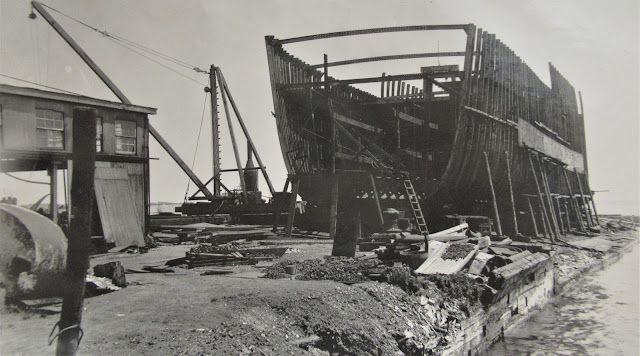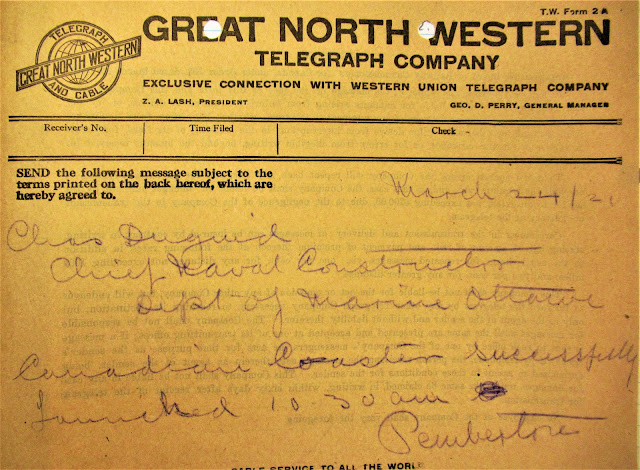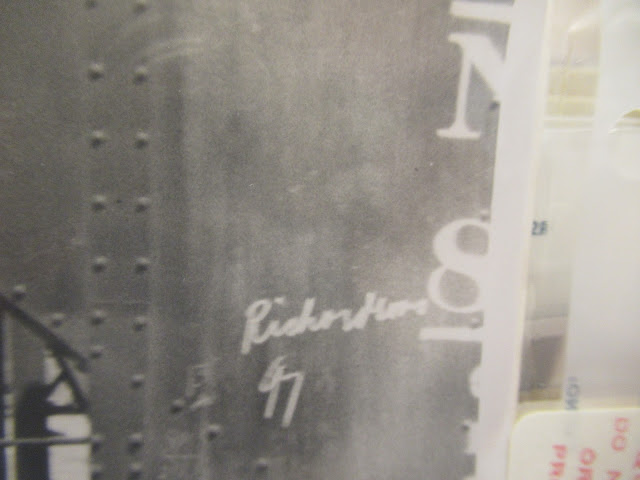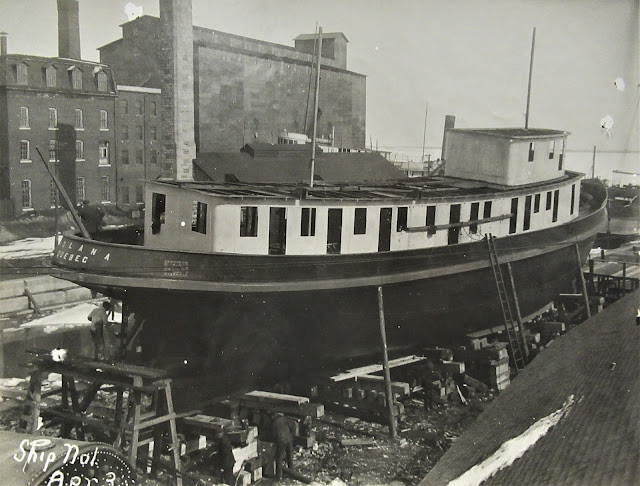
The Polana was Ship No. 1 launched at Collingwood Shipbuilding Co's Kingston Yard. A quarantine cutter for the Department of Agriculture's quarantine station at Grosse Isle, QC, the tender was awarded in late-June, 1910. The local shipyard placed the lowest bid, and its inaugural vessel was launched at 3 p.m. on April 4, 1911, setting sail for Quebec on May 24. She was equipped with two private hospital rooms and two surgeries, as well as accommodation for medical staff and officers' quarters panelled with oak and cherry. At 278 gross tons, she measured 107 x 23 feet (113 feet in overall length). After serving the Department of Agriculture, she was transferred to Marine And Fisheries and renamed Jalobert, in 1923. During World War II, she served as a pilot vessel at Rimouski, QC.
Captioned April 3, Polana is taking shape. The factory and cereal warehouse at the foot of Gore Street is prominent in the background:
Flags flying, approaching launch:
Launch complete, with superintendent John McLeod in charge, and christening by 12 year-old Helen Hale, daughter of Captain and Mrs Hale of Johnson Street. Royal Military College cadets were in attendance to further their knowledge in practical mechanics.
In-water view captioned May 24, 1911 (below) - the day she sailed for Quebec City. Sold commercially in 1954 as Macassar, becoming Queen City in 1960, she was a floating restaurant as of 1980.
Ship No. 2 was hull only, a tug subcontracted by Collingwood, the Wabis. In some accounts, shown as a 50 foot alligator scow the Mink.
The Bellechasse was Ship No. 3, completed in 1912. The contract was awarded by the Department of Marine and Fisheries on February 28, 1911. A survey and inspection vessel, (a lighthouse steamer in some early accounts) on the St Lawrence River, she was in service until 1942 and broken up in 1954. This view is captioned November 8, 1911:
The C.G.S. Bellechasse was christened by 90 year-old Elizabeth Grimason. She measured 130 feet in length between perpendiculars (142 feet overall), with a 27 foot beam and a depth of 13 feet. On what looks like a fine spring day, this view is captioned May 15, 1912 (below) which was her launch day, at 5:00 p.m.. She made two trials up the Bay of Quinte in April, 1913.
This photo of the launch was published in the Kingston Weekly Whig on June 28, 1912:
Ship No. 4 was the Dollard, a steel lighthouse supply and buoy tender completed in 1913. At 835 gross tons, she measured 170 x 31 feet (182 feet overall). Most of her career was spent at Saint John, NB until sale in 1961 and abandoned in the Caribbean in 1968. Her keel is onshore, captioned December 29, 1911 with an inset view of her on the water:
Typed ahd handwritten lists of the first ships built by the Collingwood Shipbuilding Company at the Kingston Yard:
(All photos and documents from Kingston Shipyards Papers, Queen's University Archives unless otherwise noted.)
.JPG)
.JPG)






















.JPG)

















.JPG)













